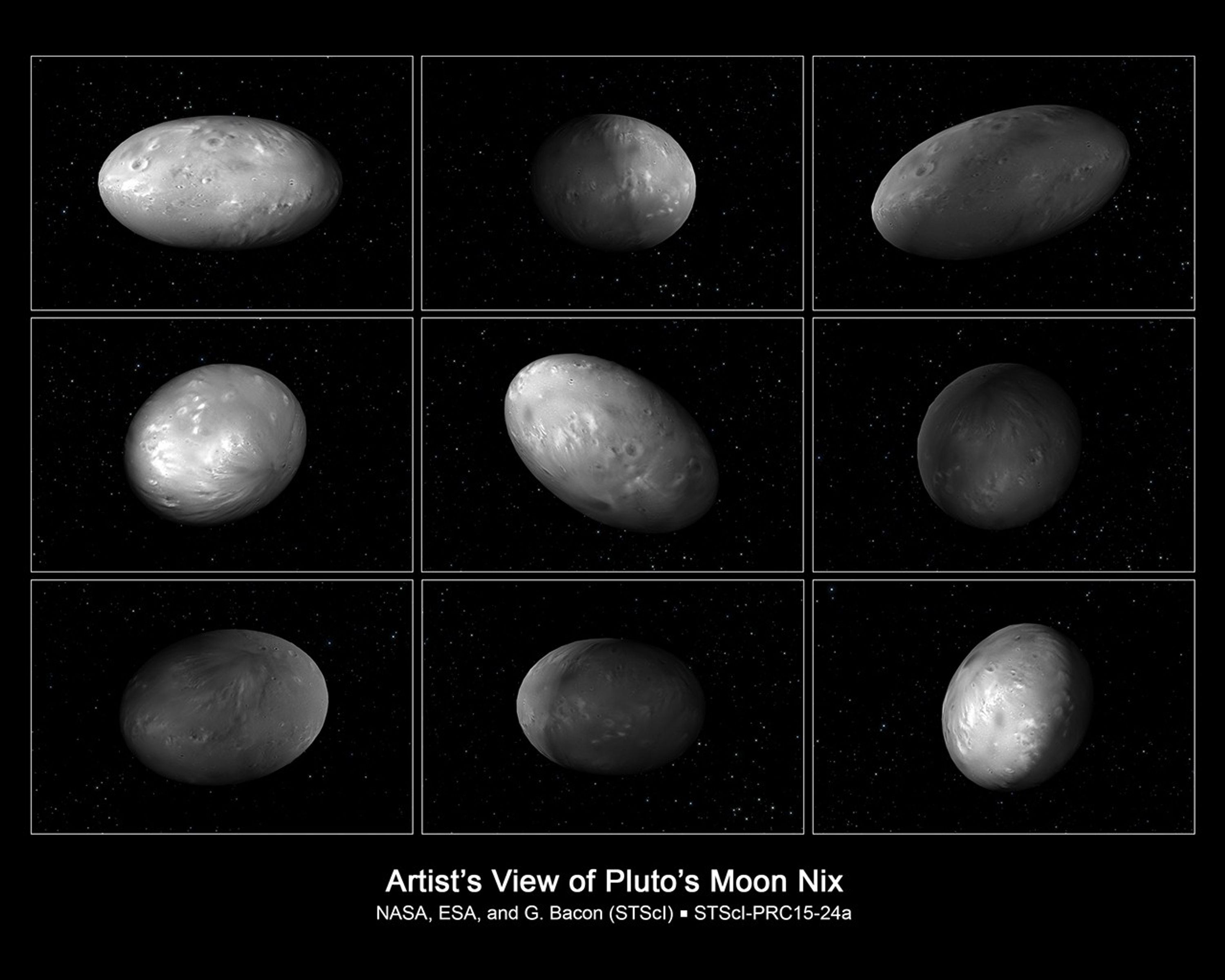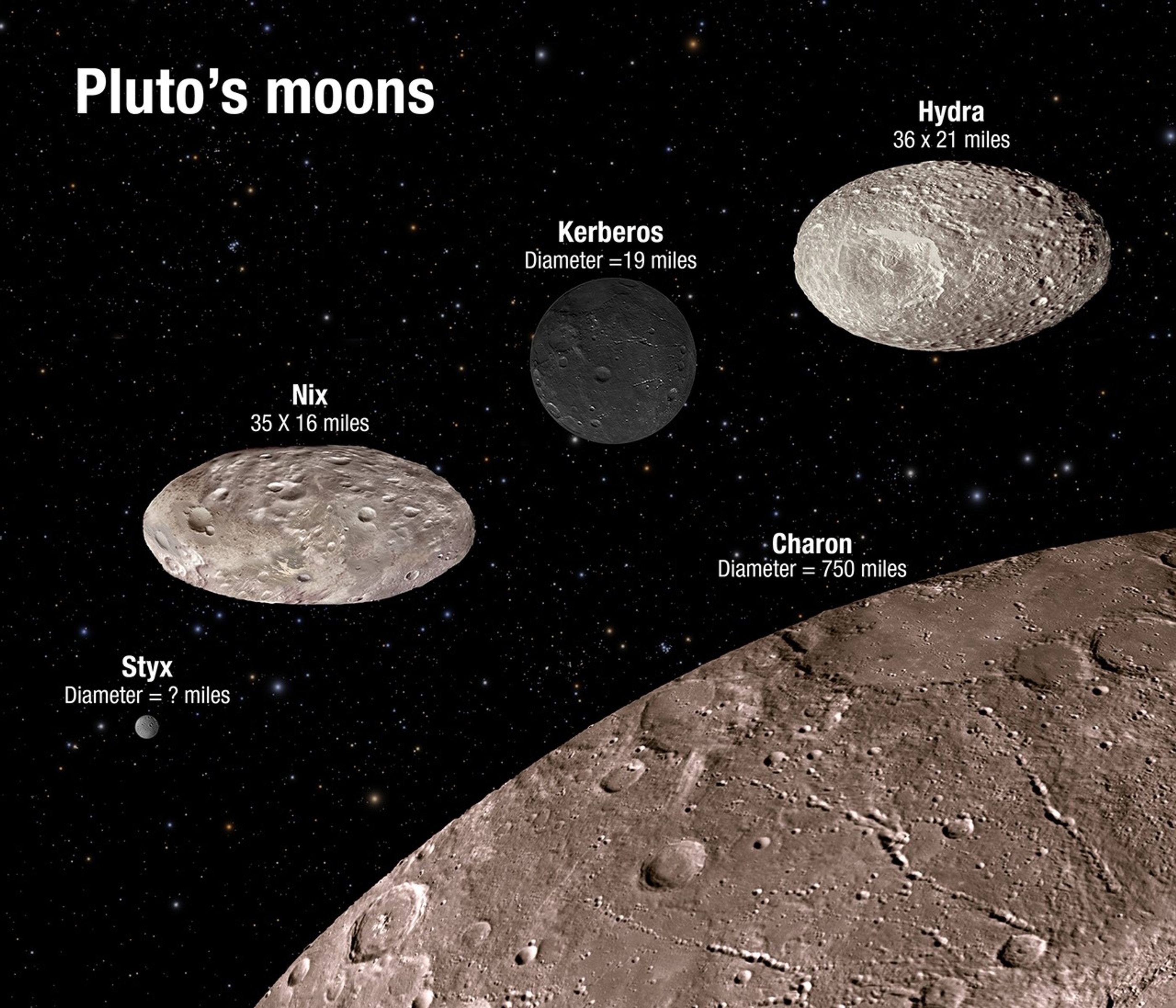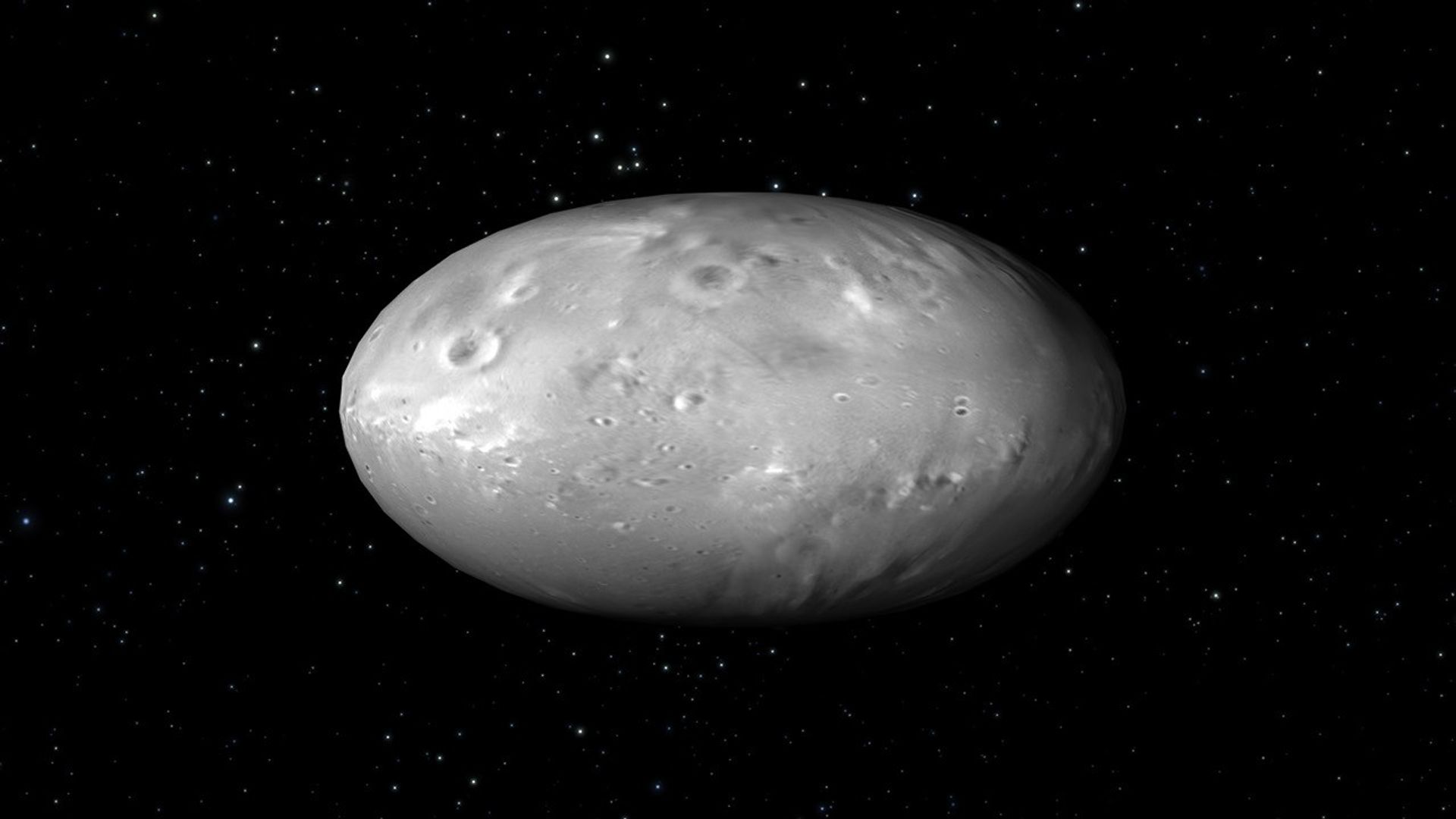1 min read
Artist’s View of Nix Rotation, Frame 3

About the Data
- Data DescriptionData DescriptionProposal: A description of the observations, their scientific justification, and the links to the data available in the science archive.
Science Team: The astronomers who planned the observations and analyzed the data. "PI" refers to the Principal Investigator.Data of the minor moons of Pluto were obtained from various HST proposals, including 12436: M. Showalter (SETI Institute) and D. Hamilton (University of Maryland, College Park), who also comprise the science team for this release.
- Object NameObject NameA name or catalog number that astronomers use to identify an astronomical object.Nix
- Release DateJune 3, 2015
- Science ReleaseHubble Finds Two Chaotically Tumbling Pluto Moons
- Credit
Related Images & Videos

Artist's Illustration of the Chaotic Spin of Pluto's Moon Nix
This set of artist's illustrations of Pluto's moon Nix shows how the orientation of the moon changes unpredictably as it orbits the "double planet" Pluto-Charon. This illustration is based on dynamical models of spinning bodies in complex gravitational fields – like the field...

Artist's Illustration of Pluto's Satellites
This artist's illustration shows the scale and comparative brightness of Pluto's small satellites, as discovered by the Hubble Space Telescope over the past several years. Pluto's binary companion, Charon (discovered in 1978), is placed at the bottom for scale. Two of the moons...

Artist's Animation of the Chaotic Spin of Pluto's Moon Nix
This computer animation illustrates how Pluto's moon Nix changes its spin unpredictably as it orbits the "double planet" Pluto-Charon. The view is from the surface of Pluto as the moon circles the Pluto-Charon system. This is a time-lapse view of the moon, compressing four years...
Share
Details
Claire Andreoli
NASA’s Goddard Space Flight Center
Greenbelt, Maryland
claire.andreoli@nasa.gov







































